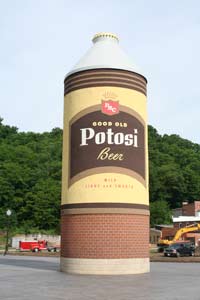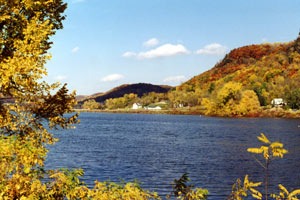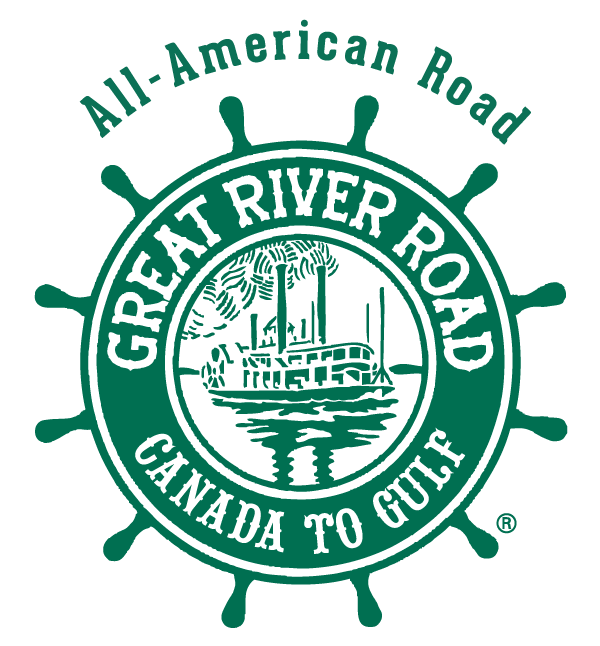A Motorcoach Tour of Minnesota and Wisconsin’s Mississippi River
The Upper Mississippi River is a series of winding channels, intricate wetlands and expansive pools. A driving tour along Minnesota and Wisconsin’s Great River Road, which runs along this beautiful stretch of waterway, is a scenic delight.
We will begin our six-day journey in Kieler, Wisconsin, the southernmost community along Wisconsin’s stretch of the National Great River Road. From here, we’ll travel north along the Mississippi River, through the small communities of Wisconsin, the bustling Twin Cities and onward through northern Minnesota to Lake Itasca, the source of America’s greatest river.
Day 1:
Our journey begins in the small community of Kieler, Wisconsin. The first miles of our journey will be through what was once the most important lead mining region in the world. Wisconsin’s nickname, “The Badger State,” comes from the homes the miners built into the hillsides in the 1800s.
Potosi

Potosi Brewing Company
Our first stop will be Potosi for a tour of the St. John Mine. This lead mine is over 100 years old. In 2008, Potosi will open the Potosi Brewery and the National Brewery Museum, which will feature artifacts and important memorabilia chronicling the history of brewing in America.
Cassville
Our next stop will be Stonefield to tour The State Agricultural Museum. The State Agricultural Museum chronicles the history of farming in Wisconsin through an extensive collection of historically significant farm implements and interesting exhibits. On our way north to Prairie du Chien, we’ll stop at Wyalusing State Park to take in a spectacular view of the Mississippi River.
Prairie du Chien
The best place to learn about the fascinating history of Prairie du Chien is the Fort Crawford Museum. Learn about famed medical pioneer William Beaumont, Chief Blackhawk and life in a frontier military fort. Other attractions in Prairie du Chien include Villa Louis and historic buildings throughout the community. We’ll spend the night in Prairie du Chien.
Day 2:
As we head north from Prairie du Chien, the river widens to reveal broad views of expansive wetlands. There are numerous places along the way to stop to enjoy the view.
La Crosse
This is the largest community along Wisconsin’s Great River Road. La Crosse’s historic downtown features a number of restaurants, shops and turn-of-the-century buildings. We’ll spend some time exploring this charming downtown.
Onalaska
The Onalaska Historical Society, located in the Onalaska Library, gives a glimpse into the storied past of the area. The museum features ancient tools and artifacts and exhibits showcasing Onalaska’s history as a major center for the lumber industry. We’ll stay in Onalaska for the night.
Day 3:
As we head north from Onalaska, we enter the northern half of the Wisconsin Great River Road. Some of the most incredible scenic overlooks can be found along this stretch of the journey.
Trempealeau
The next stop along our Great River Road journey will be Trempealeau. Just north of town is the Trempealeau National Wildlife Refuge. The refuge features a number of trails, a visitor center and an observation deck that looks out onto the pristine wetlands of the refuge.
Alma

Wings Over Alma
There are many places along the Wisconsin and Minnesota’s Great River Road to get a panoramic view of the landscape, and Alma’s Buena Vista Park is certainly one of the very best. On the north end of Alma, you’ll find Rieck’s Lake Park, a great place to see migrating Tundra Swans during the spring and the fall.
Prescott
The Great River Road Visitor and Learning Center at Freedom Park in Prescott is a great place to recap our journey along Wisconsin’s Great River Road. The center features exhibits on bald eagles, commercial fishing, the pearl button industry and life along the Upper Mississippi River. We’ll spend the night in Prescott.
Day 4:
Our days journey begins with crossing the river into Minnesota, where we’ll follow the Great River Road all the way to the source of the Mississippi River at Lake Itasca.
Wabasha
Our first stop in Minnesota will be the National Eagle Center in Wabasha. Minnesota boasts more nesting pairs of bald eagles than any other state in the U.S. At the center, you’ll learn everything you ever wanted to know about bald eagles. There’s even an Eagle Watch Deck that is one of the best places in the U.S. to spot bald eagles on the wing.
Minneapolis – Upper St. Anthony’s Falls Dam
The Lock & Dam system built in the 1930s had a tremendous impact on shaping the river you see today. We’ll stop at the Upper St. Anthony’s Falls Dam in Minneapolis to view the falls and to see a working Lock & Dam in action. The lock you see below is the northernmost of the 29 locks between the Twin Cities and St. Louis.
Little Falls
The boyhood home of famed aviator Charles Lindbergh is here in Little Falls. We’ll stop and visit this historic site. Other attractions in Little Falls include the Minnesota Fishing museum and the Charles A. Weyerhaeuser Museum. We’ll spend the night here in Little Falls.
Day 5:
The river narrows as we drive upstream towards its source.
Brainerd

Paul Bunyan Statue
Our first stop of the day is for a photo opportunity with Paul Bunyan and Babe the Blue Ox. A quick 10 minute drive east of Brainerd brings us to the home of these famous statues. In addition to Paul and Babe, Brainerd is also a well-known fishing and golfing destination.
Crosby
Heading north, we enter a region of Minnesota that was once a major center for iron mining. The Croft Mine was the source of an extremely rich iron ore and was one of a number of iron mines in the area. The Croft Mine Historical Park gives visitors a glimpse into the life of a miner. Many of the old mines in the area are now recreational lakes that attract both trout anglers and scuba divers.
Grand Rapids
We’ll stop for the night in Grand Rapids. Area attractions in Grand Rapids include the Forest History Center, where visitors can experience life as it was in 1900 in a white pine logging camp through interactive exhibits.
Day 6:
We are now in the north woods region of Minnesota, a land of forests, lakes and wildlife. The area is a popular destination for anglers, hunters and outdoor enthusiasts.
Cass Lake
Cass Lake is a center for vacationers coming to the area for the excellent fishing and lakeside resorts. We’ll stop in Cass Lake to check out the shops and restaurants before continuing towards Lake Itasca.
Lake Itasca
Our journey ends where the Mississippi River begins, at Lake Itasca State Park. It is here, at 1,475 feet above sea level, the great river embarks on its journey south to the Gulf of Mexico. You’ll have a chance to dip your hands in the true source of the Mississippi River—or even take off your shoes and wade across.







